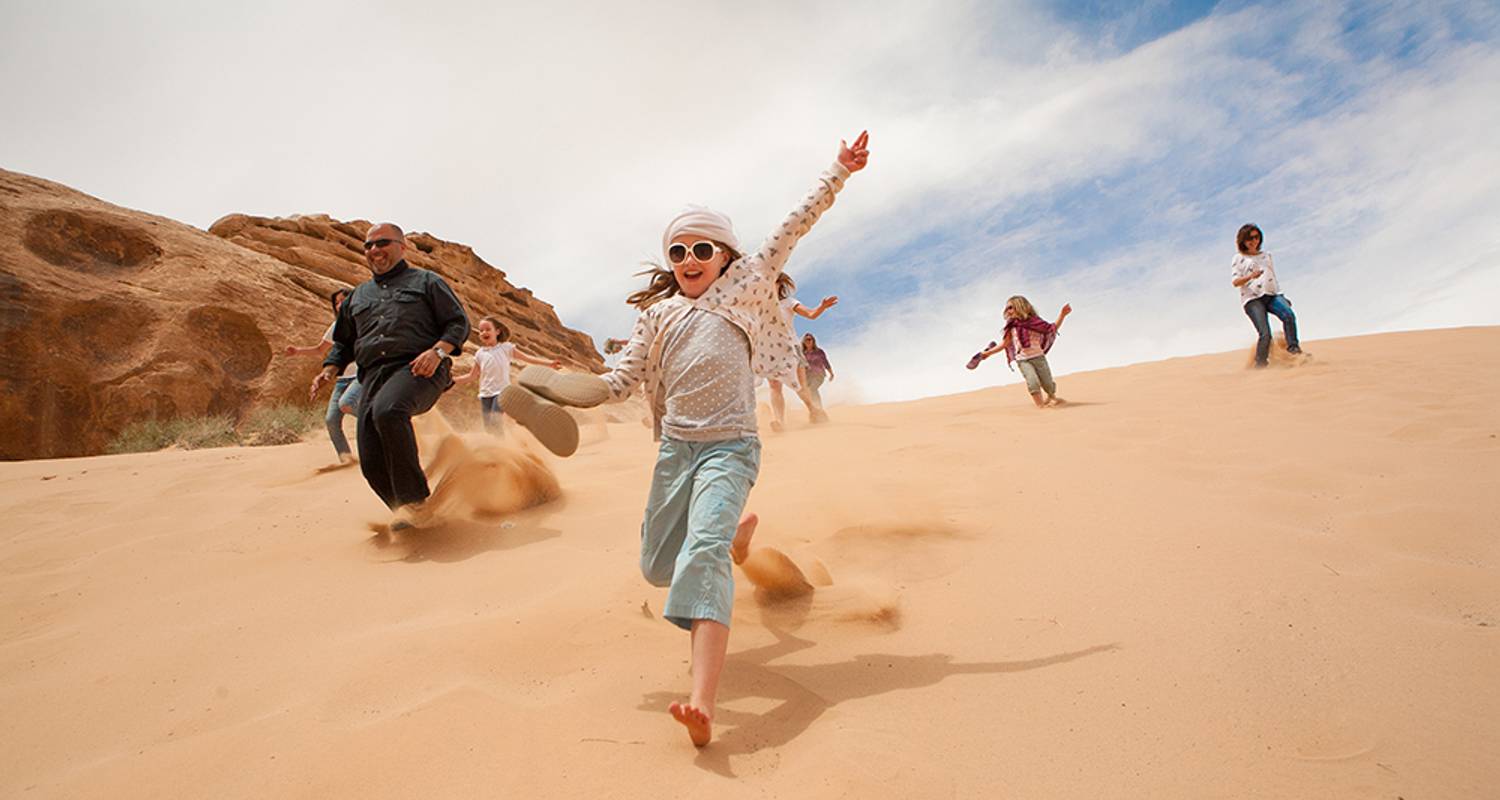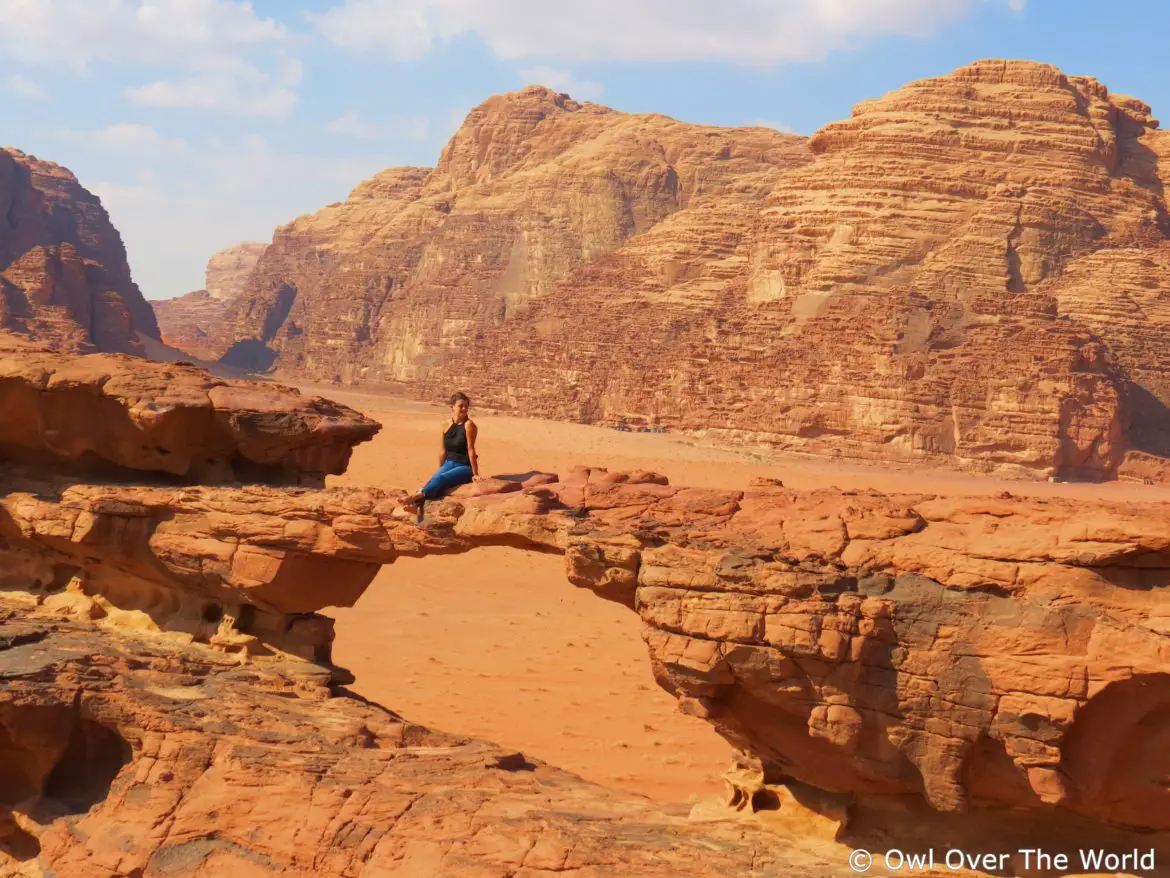Best Jordan Tours for Australians: Top Itineraries, Highlights & Travel Tips

Overview of Jordan Tours for Australians
Popular Jordan Tour Destinations
Jordan is a captivating destination that offers an array of experiences ideal for Australian travellers seeking cultural enrichment and stunning landscapes. The following destinations epitomise the diverse allure of Jordan:
- Petra: Often at the top of any travel list, Petra is renowned for its archaeological marvels and was named one of the New Seven Wonders of the World. As tourists explore the rock-cut architecture, they can marvel at the Al Khazneh (The Treasury) and the Siq, a narrow gorge leading to this ancient city.
- Wadi Rum: This vast desert landscape, dubbed the "Valley of the Moon," presents a striking vista of sandstone mountains and scenic vistas. Adventurers can engage in thrilling activities like rock climbing and camel riding while immersing themselves in the local Bedouin culture.
- Jerash: Not far from Amman, the ancient city of Jerash is one of the best-preserved Roman ruins outside of Italy. Visitors can stroll through the impressive collonaded streets, theatres, and temples, offering a glimpse into Roman architecture.
- Dead Sea: Known as the lowest point on Earth, the Dead Sea attracts visitors for its unique buoyancy, allowing them to float effortlessly. Sharing the experience of a mud bath or wellness treatments in this mineral-rich body of water is a must.
Cultural Highlights of Jordan Tours
Jordan’s rich heritage is a tapestry woven from its historical significance and its diverse cultural influences. When embarking on a Jordan tour, Australians can expect to encounter dynamic cultural experiences, including:
- Culinary Delights: Food is a central pillar of Jordanian culture. Enjoying dishes like Mansaf (a traditional lamb dish served with rice) or tasting locally produced olives and hummus allows travellers to engage with the authentic flavours of the region.
- Hospitality: The warmth and friendliness of the Jordanian people are noteworthy. Visitors will often find locals eager to share stories, traditions, and customs, providing an enriching perspective on their way of life.
- Bedouin Culture: Understanding the nomadic Bedouin lifestyle and their relation to the landscape enriches the travel experience. Participating in traditional Bedouin feasts or music can offer insights into their ancient customs.
Through these popular destinations and cultural highlights, Australians will discover a multifaceted Jordan that harmoniously blends the historical with the contemporary, making it a destination worth exploring.

Planning Your Jordan Tour
Best Time to Visit Jordan
Selecting the optimal time for visiting Jordan can significantly enhance the travel experience. Generally, the best periods to visit are during spring (March to May) and autumn (September to November). These seasons boast mild temperatures and minimal rainfall, ideal for exploring Jordan's archaeological wonders and majestic landscapes.
- Spring (March to May):
- Temperature: Average daytime temperatures range from 20°C to 30°C.
- Wildflowers: The countryside blooms with vibrant flowers, making for picturesque scenery.
- Autumn (September to November):
- Temperature: Similar to spring, with comfortable temperatures ideal for outdoor activities.
- Cultural Events: Occasions such as the Jerash Festival of Culture and Arts often take place, showcasing local performances and art.
While summer (June to August) can be exceedingly hot, especially in locations such as Petra and Wadi Rum, winter months (December to February) are relatively cool, with occasional rain and snow in northern areas.
For those seeking adventure without the crowds, visiting during the shoulder seasons can provide a more tranquil experience.
Visa Requirements for Australian Travellers
Before setting off on a Jordanian adventure, it's essential for Australians to understand the visa requirements. Most Australian citizens can obtain a visa on arrival, making the process convenient and straightforward.
- Visa on Arrival:
- Cost: Approximately 40 Jordanian Dinars (around AUD 80).
- Validity: Typically valid for 30 days.
- Jordan Pass: This is an excellent option for visitors planning to explore multiple attractions:
- It includes entry to Petra, Jerash, and Wadi Rum.
- The pass waives the visa fee if purchased before entering Jordan.
To obtain a visa, travellers should ensure they have:
- A passport valid for at least six months from the date of entry.
- A return ticket to confirm their travel plans.
In preparation for their trip, Australians should research and gather necessary documentation, ensuring a seamless entry into this enchanting destination. By understanding the best time to visit and the visa requirements, travellers can focus on the excitement and rich culture that awaits them in Jordan.
Top Itineraries for Jordan Tours
Classic Jordan Tour Itinerary
For those who wish to immerse themselves in Jordan's historical treasures, the Classic Jordan Tour itinerary is a perfect choice. This itinerary typically spans around seven to ten days and focuses on showcasing the country's most iconic landmarks.
Day 1: Arrival in Amman
- Transfer to your hotel to rest after your flight.
- Enjoy an evening meal at a local restaurant, sampling traditional Jordanian cuisine, such as Maqluba or Kebab Hindi.
Day 2: Explore Amman and Jerash
- Visit the Citadel Hill for panoramic views of the city.
- Head to the ancient ruins of Jerash, one of the best-preserved Roman cities, to walk among temples, theatres, and collonaded streets.
Day 3: Madaba and Mount Nebo
- Discover the stunning mosaics of Madaba at St. George's Church.
- Visit Mount Nebo, where Moses is believed to have seen the Promised Land.
Day 4-5: Petra
- Spend two days in Petra, giving ample time to explore the Siq, Al Khazneh (The Treasury), and hiking options like the Monastery trail.
- Consider a guided night tour to witness the magical candlelit ambience of Petra.
Day 6: Wadi Rum
- Travel to Wadi Rum, renowned for its majestic desert landscapes.
- Experience a jeep safari or a camel trek, and spend the night under the stars in a Bedouin camp.
Day 7: Dead Sea
- Relax and float in the mineral-rich waters of the Dead Sea.
- Enjoy wellness treatments at a local resort before concluding your tour.
Adventure Jordan Tour Itinerary
For thrill-seekers, the Adventure Jordan Tour itinerary is custom-made to satisfy the adventurous spirit. This itinerary can also span around seven to ten days, combining outdoor activities with cultural experiences.
Day 1: Arrival in Amman
- Settle in and prepare for an exciting journey ahead.
Day 2: Hiking in Dana Biosphere Reserve
- Explore the breathtaking trails of Dana, offering fantastic views and diverse ecosystems.
- Camp overnight in the reserve, surrounded by nature.
Day 3: Petra by Day and Night
- Spend the day hiking through Petra, exploring its many trails.
- Experience the magical Petra by Night event, featuring music and candlelight.
Day 4: Wadi Rum Adventures
- Spend a full day in Wadi Rum, engaging in rock climbing, hiking, or hot air balloon rides for sweeping desert views.
- Camp overnight in a Bedouin tent, enjoying tales of desert life around a campfire.
Day 5: Snorkelling at Aqaba
- Travel to the coastal city of Aqaba for a day of snorkelling and relaxation on the Red Sea.
- Discover vibrant coral reefs and marine life.
Day 6: Explore the Desert Castles
- Visit the fascinating desert castles of Qasr Al-Kharraneh and Qasr Al-Azraq, blending history with adventure.
Day 7: Return to Amman
- Wrap up your adventure with some leisure time or personal exploration before returning home.
These diverse itineraries showcase the rich history and stunning landscapes of Jordan, ensuring that every traveller finds their perfect fit for an unforgettable experience.
Must-See Highlights in Jordan
Petra: The Rose City
One of the jewels of Jordan, Petra, often referred to as the "Rose City" due to the striking colour of its rock formations, is a must-see for anyone visiting the region. This UNESCO World Heritage site is renowned for its incredible archaeological wonders and historical significance.
- The Entrance: Visitors access Petra through the Siq, a narrow gorge flanked by towering cliffs. This dramatic entrance sets the scene for the stunning sights that lie ahead.
- The Treasury (Al Khazneh): The first glimpse of the Treasury is breathtaking. Carved into the rose-red rock face, its elaborate façade has captivated countless travellers and film enthusiasts alike, famously featuring in movies like Indiana Jones.
- Hiking Opportunities: Beyond the Treasury, Petra offers numerous hiking trails. The trek to the Monastery (Ad Deir) provides spectacular panoramas and a sense of accomplishment, being well worth the effort.
Experiencing Petra at sunrise or sunset creates a magical atmosphere, adding another layer of beauty to this ancient wonder.
Wadi Rum: The Valley of the Moon
Another essential highlight on any Jordanian itinerary is Wadi Rum, a vast desert landscape that feels like stepping onto another planet. Earning its nickname as the "Valley of the Moon," this majestic expanse is celebrated for its unique rock formations and stunning vistas.
- Jeep Tours: Exploring Wadi Rum’s otherworldly terrain via a jeep tour offers an exhilarating way to appreciate its beauty. Visitors can traverse sand dunes, visit ancient petroglyphs, and learn about the Bedouin lifestyle.
- Camel Rides: For a more traditional experience, consider a camel ride through the desert, allowing for a leisurely pace to soak in the breathtaking scenery.
- Stargazing: As night falls, Wadi Rum transforms into a canvas of stars. The clear desert skies offer an extraordinary stargazing opportunity that shouldn't be missed, making overnight camping an appealing option.
Dead Sea: The Lowest Point on Earth
No journey to Jordan would be complete without a visit to the Dead Sea, famously known as the lowest point on Earth at 430 metres below sea level. This unique body of water is renowned for its healing properties and tranquil ambience.
- Floating Experience: Due to its high salt content, floating in the Dead Sea is an almost surreal experience. Visitors often enjoy reclining on the surface, with the mineral-rich waters providing an unparalleled sense of buoyancy.
- Mud Treatments: The therapeutic mud found along the shoreline is also famed for its beneficial properties. Applying this natural mud can be invigorating, nourishing the skin and leaving a refreshing feeling.
- Wellness Resorts: Many resorts along the Dead Sea cater to relaxation, offering spa treatments that incorporate local ingredients, ensuring that the experience is one of both relaxation and revitalisation.
Exploring these must-see highlights of Jordan encapsulates the nation's rich history, stunning landscapes, and unique experiences, making it an unforgettable destination for adventurous travellers.

Travel Tips for Australians Visiting Jordan
Currency and Money Matters
Visitors to Jordan will find that navigating local currency and money matters is relatively straightforward. The official currency is the Jordanian Dinar (JOD), which is subdivided into 10 dirhams, 100 piastres, and 1000 fils.
Here are some practical tips for handling currency:
- Currency Exchange: Exchange facilities are readily available at airports, banks, and exchange offices in major cities. It is advisable to compare rates before exchanging a large sum.
- Credit and Debit Cards: Most hotels, restaurants, and shops in urban areas accept credit and debit cards. Visa and Mastercard are widely used, but it's always good to carry some cash, especially in rural areas or during excursions.
- ATMs: ATMs accepting international cards are prevalent in both Amman and tourist sites like Petra and Wadi Rum, providing convenience for withdrawing cash as needed.
- Tipping: Tipping is customary in Jordan. A 10-15% tip is generally expected in restaurants, and leaving small change for guides and drivers is appreciated.
Managing your money efficiently will enhance your experience and prevent unnecessary stress during your travels throughout Jordan.
Local Customs and Etiquette
Understanding local customs and etiquette is vital for enjoying a respectful and enriching experience in Jordan. The country is known for its hospitality, and following a few basic customs can go a long way in building rapport with locals.
- Greetings: A warm handshake is common among men, while women may prefer a nod or smile unless a close relationship exists. Among friends or family, it's customary to inquire about each other's well-being.
- Dress Code: While Jordan is relatively liberal, it's advisable to dress modestly, especially in rural areas and religious sites. Women may want to wear clothing that covers their shoulders and knees, while men should avoid shorts in these contexts.
- Dining Etiquette: When invited to a local home, it is polite to accept food and drink offered. If offered a meal, use your right hand to eat, as the left hand is considered impolite. Observing local dining customs enhances the experience and shows respect for the culture.
- Photography: Always ask permission before photographing people, particularly in rural areas or during cultural events. Some sites might have restrictions on photography as well.
By embracing these currency practices and local customs, Australians can navigate their Jordanian adventure with confidence and cultural sensitivity, ensuring an enjoyable and memorable experience throughout their travels.
Safety Considerations for Travellers in Jordan
Health and Safety Tips
Jordan is generally considered a safe destination for travellers, but it's wise to take some health and safety precautions to ensure a smooth experience. Here are essential tips to consider:
- Stay Hydrated: The climate can be quite dry and hot, especially in the summer months. Drinking plenty of water is vital, particularly if engaging in outdoor activities like hiking in Petra or Wadi Rum. Carry a reusable water bottle and refill it throughout the day.
- Travel Insurance: Before travelling, obtaining comprehensive travel insurance is advisable. This should cover any medical expenses, personal belongings, and potential cancellations.
- Vaccinations: Although no specific vaccinations are mandatory for Jordan, routine vaccinations should be up to date. It's also worth consulting with a healthcare provider about recommended vaccines for travel, especially if venturing into rural areas.
- Road Safety: Road conditions in cities can be chaotic. If you choose to drive, always wear a seatbelt and be cautious of local driving habits. It’s often safer to use reputable taxi services or arranged transport.
- Local Food and Water: While Jordan boasts delicious cuisine, it's best to dine in reputable establishments and drink bottled or boiled water to avoid any potential stomach issues.
Emergency Contacts and Services
Being informed about emergency contacts and available services can greatly enhance peace of mind while travelling in Jordan.
- Emergency Numbers:
- Police: 191
- Ambulance: 199
- Fire: 192
These numbers connect you to essential emergency services throughout the country. It’s prudent for visitors to keep these numbers handy, either written down or saved in their mobile phones.
- Healthcare Facilities: Major cities like Amman have several reputable hospitals and clinics. International hospitals are available with English-speaking staff, providing an additional comfort level for visitors.
- Local Embassies: Should any issues arise, Australian citizens can contact the Australian Embassy in Amman:
- Address: 5th Circle, Amman
- Phone: +962 6 577 1344
- Email: [email protected]
Keeping these contacts at hand allows travellers to act swiftly in case of emergencies, ensuring a safer and more enjoyable trip.
By being prepared and informed, visitors to Jordan can fully immerse themselves in the rich culture and breathtaking scenery while maintaining their health and safety throughout their journey.
